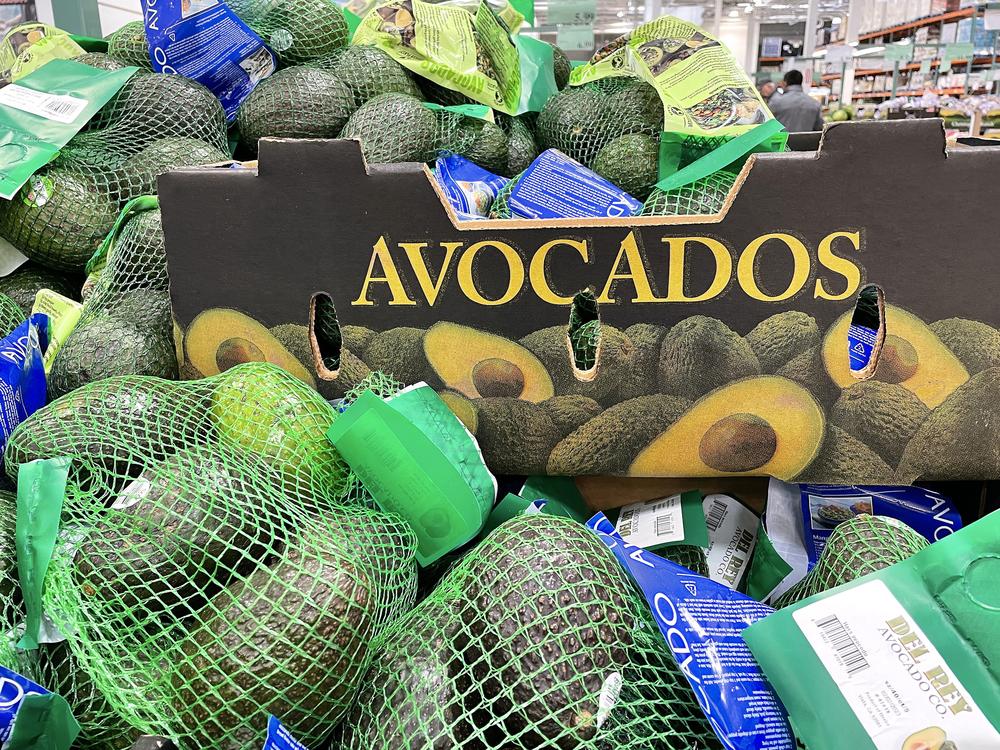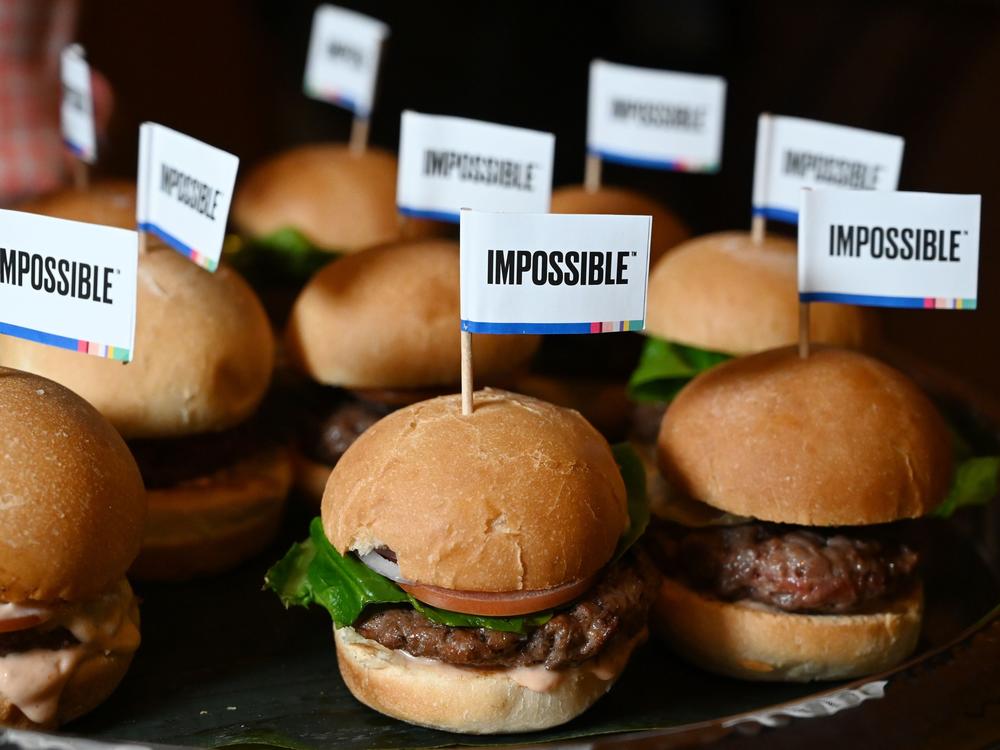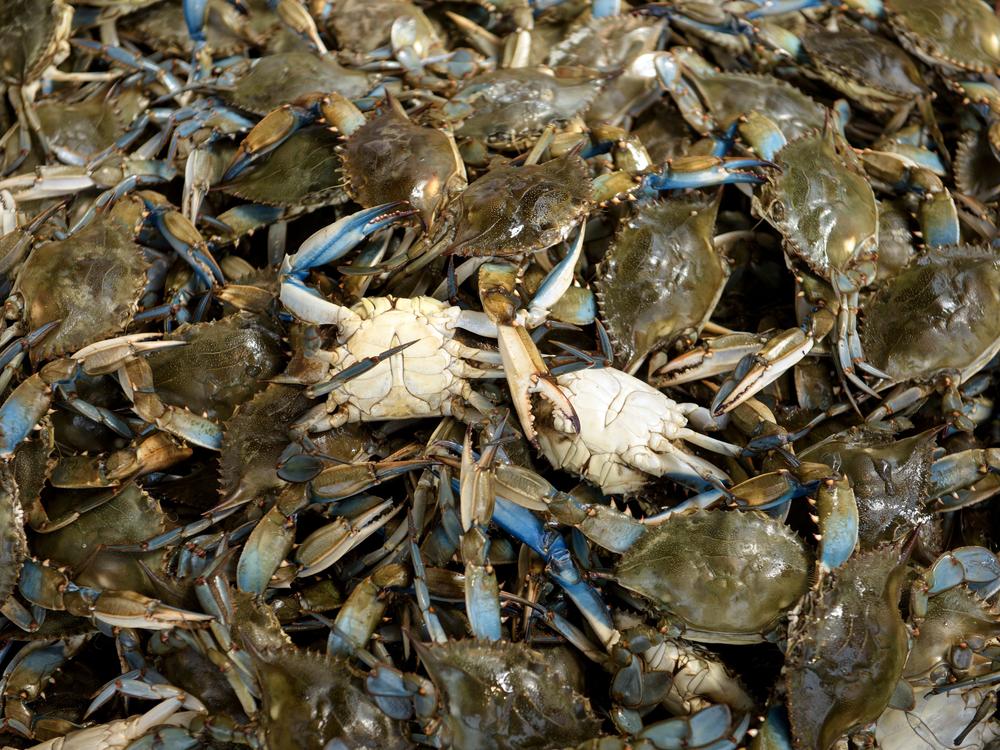Section Branding
Header Content
Sustainable eating habits that can help the environment without taking over your life
Primary Content
Climate change is affecting our food, and our food is affecting the climate. NPR is dedicating a week to stories and conversations about the search for solutions.
What we eat plays a role in the health of our environment. Here are some things to consider when trying to make doable changes to improve your impact without breaking the bank.
'Local': It's more how far your food has traveled
When we talk about eating local as a climate solution, we're talking about the energy and resources needed to get that tomato from a farm in Florida to your kitchen. But as WBUR Boston's Barbara Moran explains:
"[I]n the middle of New England winter, nobody is growing tomatoes locally unless they’re hydroponic or in a greenhouse. While these practices can be environmentally sound, studies show that tomatoes grown in a Florida field had a lower environmental impact than greenhouse tomatoes from Ontario or hydroponic tomatoes from Maine."
➡️ QUIZ: How well do you know local food's impact on climate change?
Local looks different depending on where you live
Back in 2022, WBUR Boston's Andrea Shea went hardcore locavore for a week to see how practical it would be. Beyond the obvious switches (sourcing local bananas, lemons and avocados in New England is challenging at best,) finding lots of staples within 200 miles of home wasn't impossible, but it was stressful.
Sourcing local maple syrup? Check. Eggs? Check. Coffee? Not so much.
➡️ What eating local in New England for one week cost
➡️ Growing 'farm to school' movement serves up fresh, local produce to kids
When you're striving for perfection when trying to source exclusively from your area, you can quickly get overwhelmed or blow your budget.
How to make eating local realistic in your community
This boils down to taking advantage of what's in season, available and affordable.
Not all of us have access to multiple supermarkets or grocery stores, let alone find locally produced grains or spices that are in our budget. But more options are popping up, and when you can take advantage of them, it can help improve that access for others.
This popup food stand in Charlotte, North Carolina, is serving a food desert in the community and raising money to add a local grocery store, teaching kitchen and meat processing facility. As WFAE Charlotte's Zachary Turner reports, the effort is designed to help local farmers, increasing access to locally made food in the area.
“If we want to save farmland, then our farmers need to make money,” Carolina Farm Trust CEO Zack Wyatt says. “If we care about climate change, then we need to farm the right way.”
Meat: None? Less? What's doable?
Does it have to be none? Not exactly.
As a target, for our health nutritional scientists recommend adults eat less than half an ounce of red meat per day. That works out to about 3.5 ounces — or a single serving of red meat — per week. And it's far less red meat than Americans currently consume on average: between an estimated 2 and 3 ounces per day.
Climate scientists also call for us to consume less to reduce greenhouse gas emissions and the resources involved in commercial meat production.
➡️ This diet swap can cut your carbon footprint and boost longevity
➡️ Millions of women are 'under-muscled.' These foods help build strength
That's not zero, but it's certainly a lot less for most Americans. And what you substitute in can have an impact on not only your climate footprint but your health.
Back in 2022, WBUR Boston's Barbara Moran looked into the plant-based vs. traditional breakdown of a few key substitutes like chicken, eggs, milks and cheese.
But none is getting more fun.
Access to easy and affordable vegetarian or vegan food is getting better in many parts of the country. In Idaho, "despite their red-blooded meat and potatoes reputation," Boise State Public Radio's Julie Luchetta found a number of menus providing options to reduce meat consumption.
➡️ Nonwhite Americans are eating less meat. Vegan activists of color explain why
➡️ Don’t call it vegan: What hospitals are learning about nudging people to eat greener
Just last month in the Bay Area, KQED's Luke Tsai found "a multicultural smorgasbord of jollof, lumpia, curry rice bowls, Cajun fried chicken and Dole Whip–style soft serve" — all vegan — at one of the area's biggest food festivals.
Surprising sustainable switches
Then there are some creative solutions that won't work for everyone but might inspire you as you tackle finding more sustainable eating habits.
Worried about invasive species? Try eating them.
KCUR put together a list of edible invasive species you can try if you're in the Kansas City region.
Please Note: If done incorrectly, foraging can pose serious risks. Those who choose to pursue foraging should conduct thorough research from multiple credible sources, consult experts, and exercise caution.
Certain seafood that's causing problems in some parts of the country could make for an easy sustainable switch from harder-to-source options. For example, in the Pacific Northwest, green crabs are invasive, but they can also be a local alternative to blue crabs found in lots of East Coast recipes.
➡️ What makes seafood sustainable?
➡️ Is it OK to eat farmed fish? Here’s what you need to know
➡️ 'Have I Had My Last Good Oyster?'
After the most recent emergence, finding things to do with all the cicadas was a big goal. One option? Frying them up and adding them to a meal for a bit of crunch.
When growing at home can be affordable
In some situations, growing your own produce or herbs can be the best option to help you reduce the cost of eating sustainably.
Not sure where to start? Life Kit's got a step-by-step guide to starting an edible garden (no matter how little space you have available.)




